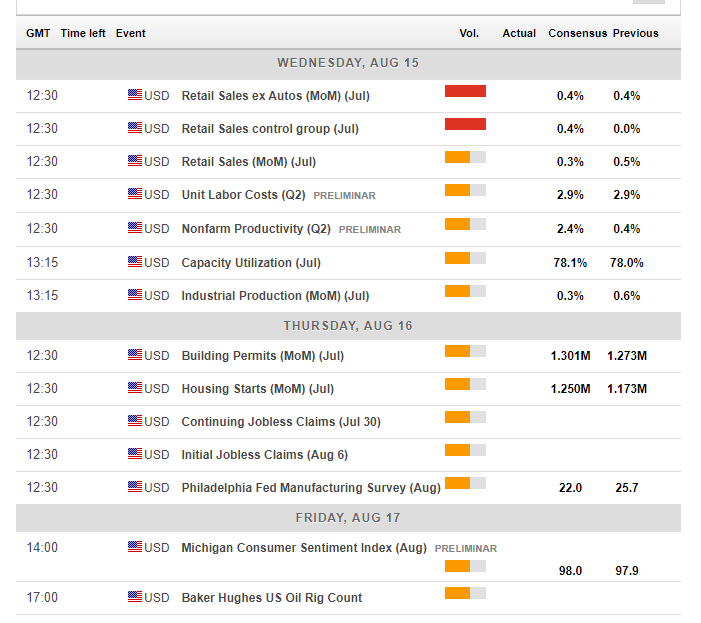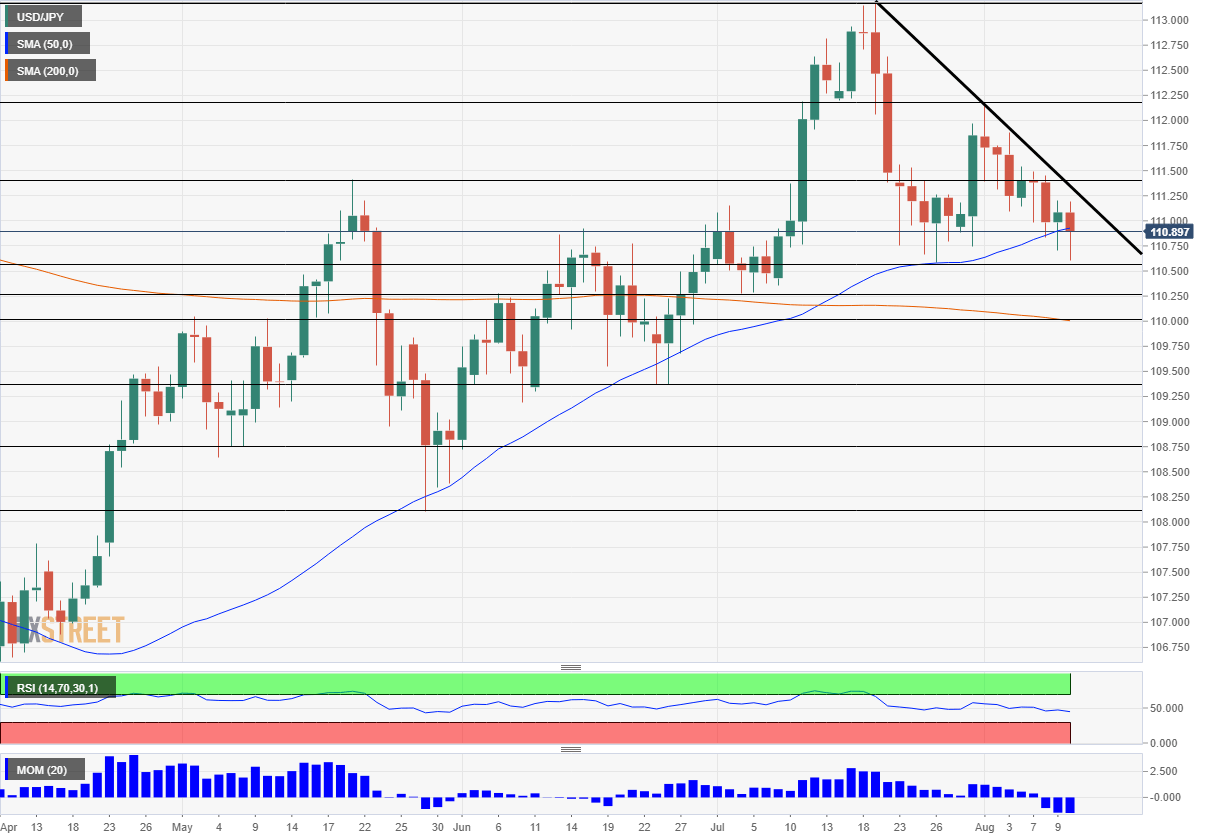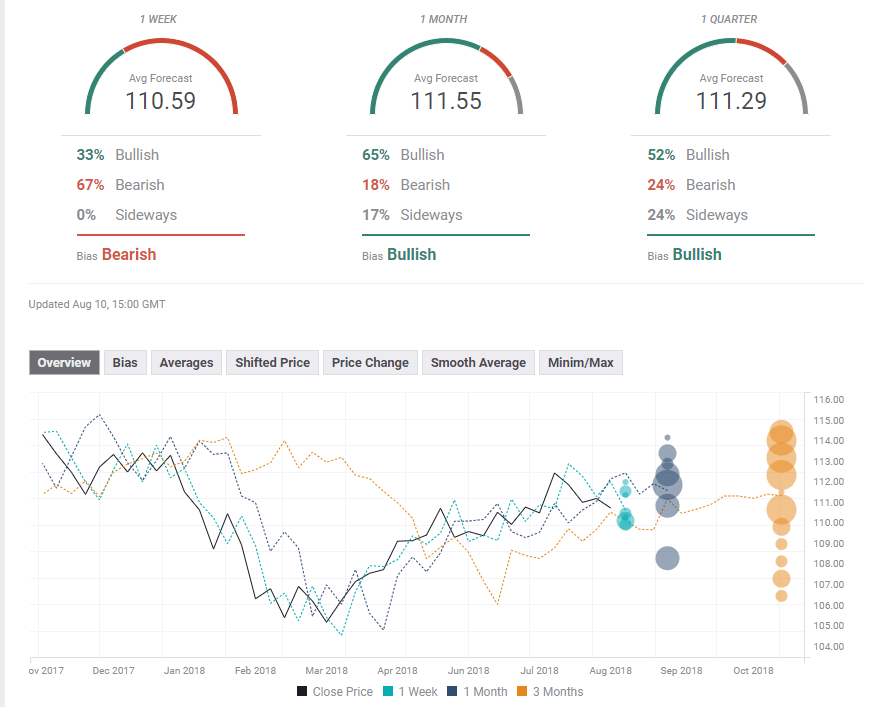- The USD/JPY moved on many factors but saved its energy for things to come.
- The US consumer is in the limelight with retail sales and also consumer confidence.
- The technical charts show a balanced picture for the pair while the FX Poll shows a short-term bearish trend a rise afterwards.
This was the week: Turkey, Trade, BOJ speculation, and more
Turkish crisis: Emerging markets and especially Turkey came to the forefront. The country that lies between Europea and Asia has long suffered high inflation and a defiant President that prefers low interest rates. Things became more complicated when the US imposed sanctions on two Turkish ministers due to the detention of a US Pastor.
The plunge of the Turkish Lira was at first a local issue. However, when the European Central Bank became worried about European banks exposed to Turkey, it became a global one. The market mood worsened, and the Japanese yen saw safe-haven flows.
Trade concerns have been in the headlines once again. While there were no extreme adverse developments, we did learn that the US will impose tariffs on $16 billion worth of Chinese products on August 23rd and China said it would retaliate in kind. The US began with duties on $34 billion of goods earlier in the summer and with this move the total new tariffs reach $50 billion. The decision did not come as a surprise and markets have another trade date in mind.
On September 6th, the US plans to slap no tariffs on no less than $200 of Chinese products, a step that would serve as a significant escalation. There is still time for negotiations.
US data: In the US, the Producer Price Index (PPI) data came out slightly below expectations, but this seems like a one-off. JOLTs Job Openings beat expectations with 6.662 million annualized while Consumer Credit grew by a disappointing $10.21 billion.
BOJ impact: The Japanese Yen continues moving to the beat of the Bank of Japan in the week following the rate decision. Markets tested the BOJ's commitment to keeping 10-year yields close to 0%. The BOJ is somewhat more relaxed, as it wants to give banks some space to make a profit. Higher yields push the yen higher. Each time the BOJ intervened to keep yields low, the currency dropped.
Japanese GDP: Another positive development for the Japanese yen came from its quarterly GDP report which came out 0.5% QoQ, above expectations. The BOJ is unlikely to budge on these data and instead wait for inflation.
US events: Consumer in focus
The US economy is centered around consumption and this week we will get a fresh update on consumption for July, the first month of the third quarter. The figures feed into GDP expectations and may also indicate the impact of tariffs on consumption.
Headline Retail Sales rose by a robust 0.5% in June and are now projected to increase at a slower pace. Excluding autos, sales advanced by 0.4%. The most important gauge is the Retail Sales Control Group which remained flat in June and is now expected to pick up.
Unit Labor Costs and Industrial Production, also released on Wednesday, may have an impact if Retail Sales provide no surprises.
Thursday sees a mix of housing figures, weekly Initial Jobless Claims, and the Philly Fed Manufacturing Index. None of these measures stand out, but if they all go in the same direction, it could have a material impact on the US Dollar.
The last word of the week belongs to the US consumer again. The University of Michigan's preliminary Consumer Sentiment Index is set to remain steady at familiar levels just below 100.
Here are the top US events as they appear on the forex calendar:
Japan: More about bond yields than indicators
Japanese industrial output, trade balance, and investment figures are notable, and they will feed into the future movements of the currency. Japan is expected to report another trade surplus with increases in both imports and exports. The impact of trade wars on Japan has been minimal.
However, the more significant mover of the Yen is the 10-year Japanese bond-yield. Any movement to the upside by yields is likely to be accompanied by an upward move for the Yen. Extended bond-buying by the Bank of Japan will weigh on the currency.
Also, the Yen seems to have returned to its safe-haven role. An escalation in the rhetoric between the US and China on tariffs can push the Japanese currency higher while calmer talk can trigger some selling. North Korea has been quiet for a while, but one always needs to keep an open eye to any development there.
Here are the events lined up in Japan:
USD/JPY Technical Analysis
The pair is trading below a downtrend resistance line that accompanies it since late August. More importantly, the USD/JPY is slipping below the 50-day Simple Moving Average, and Momentum turned negative. The Relative Strength Index (RSI) is balanced, thus not pointing to oversold nor overbought conditions.
110.55 supported the pair in late July and also in mid-August. 110.25 served as support in early July, and the 110 level is of high psychological importance and also where we see the 200-day SMA. Further down, 109.30 was a low point in late June.
111.40 was a high point in May, and 112.20 capped the pair in late July. Also above, 113.15 was a swing high in mid-July.
All in all, the bears are gaining some ground, but there is no decisive trend just yet.
USD/JPY Sentiment
The Yen has firmly reasserted itself as the ultimate safe haven currency and it is here to stay. Concerns about trade and the impact of the Fed's tightening on the global economy will likely continue pushing money in Japan. There is more room for falls in the USD/JPY even if US data shines.
The FXStreet forex poll of experts shows a bearish tendency in the short run but a bullish one later one. The average has only changed for the short term.
Related Forecasts
Information on these pages contains forward-looking statements that involve risks and uncertainties. Markets and instruments profiled on this page are for informational purposes only and should not in any way come across as a recommendation to buy or sell in these assets. You should do your own thorough research before making any investment decisions. FXStreet does not in any way guarantee that this information is free from mistakes, errors, or material misstatements. It also does not guarantee that this information is of a timely nature. Investing in Open Markets involves a great deal of risk, including the loss of all or a portion of your investment, as well as emotional distress. All risks, losses and costs associated with investing, including total loss of principal, are your responsibility. The views and opinions expressed in this article are those of the authors and do not necessarily reflect the official policy or position of FXStreet nor its advertisers. The author will not be held responsible for information that is found at the end of links posted on this page.
If not otherwise explicitly mentioned in the body of the article, at the time of writing, the author has no position in any stock mentioned in this article and no business relationship with any company mentioned. The author has not received compensation for writing this article, other than from FXStreet.
FXStreet and the author do not provide personalized recommendations. The author makes no representations as to the accuracy, completeness, or suitability of this information. FXStreet and the author will not be liable for any errors, omissions or any losses, injuries or damages arising from this information and its display or use. Errors and omissions excepted.
The author and FXStreet are not registered investment advisors and nothing in this article is intended to be investment advice.
Recommended Content
Editors’ Picks
EUR/USD edges lower toward 1.0700 post-US PCE

EUR/USD stays under modest bearish pressure but manages to hold above 1.0700 in the American session on Friday. The US Dollar (USD) gathers strength against its rivals after the stronger-than-forecast PCE inflation data, not allowing the pair to gain traction.
GBP/USD retreats to 1.2500 on renewed USD strength

GBP/USD lost its traction and turned negative on the day near 1.2500. Following the stronger-than-expected PCE inflation readings from the US, the USD stays resilient and makes it difficult for the pair to gather recovery momentum.
Gold struggles to hold above $2,350 following US inflation

Gold turned south and declined toward $2,340, erasing a large portion of its daily gains, as the USD benefited from PCE inflation data. The benchmark 10-year US yield, however, stays in negative territory and helps XAU/USD limit its losses.
Bitcoin Weekly Forecast: BTC’s next breakout could propel it to $80,000 Premium

Bitcoin’s recent price consolidation could be nearing its end as technical indicators and on-chain metrics suggest a potential upward breakout. However, this move would not be straightforward and could punish impatient investors.
Week ahead – Hawkish risk as Fed and NFP on tap, Eurozone data eyed too

Fed meets on Wednesday as US inflation stays elevated. Will Friday’s jobs report bring relief or more angst for the markets? Eurozone flash GDP and CPI numbers in focus for the Euro.



